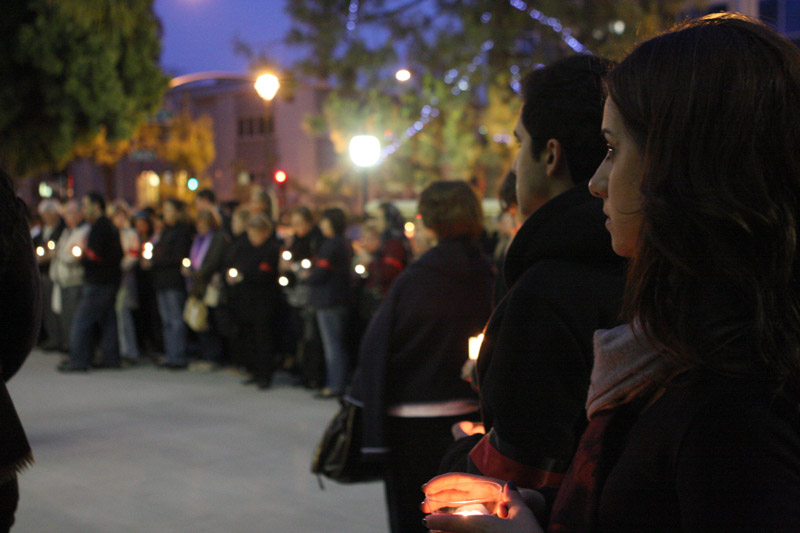On a chilly Tuesday evening, UCLA alumna Soseh Keshishyan stood before a group gathered on the steps of Burbank City Hall and sang “The Star-Spangled Banner” and “Mer Hayrenik,” the national anthem of the Republic of Armenia.
She was followed by performers playing duduks, woodwind instruments native to the Caucasus region. Members of the crowd carried painted signs declaring, “We Will Never Forget, We Will Never Forgive,” and, “Shame on Turkey.”
The group congregated in front of city hall to commemorate the 95th anniversary of the Armenian Genocide with a proclamation and a candlelight vigil.
The Meds Yeghern, or the Great Crime, which is the Armenian term for the genocide, began on April 24, 1915. On that day, prominent members of the Armenian community were arrested and deported from the city of Constantinople, now known as Istanbul.
According to a University of Michigan website, the genocide began with the roundup of Armenians in the Ottoman army by the Young Turk party, a military officer movement in the Ottoman Empire. The army officers were placed into separate groups and killed. Then community leaders and intellectuals were forcefully removed from Constantinople. This is considered the start of the genocide. The Ottoman government then informed the general Armenian population that they would be relocated and marched them into the Syrian desert. There they were starved, tortured and killed by their guards.
The majority of historians and scholars recognize that the forced marches and brutal conditions killed between one and one and a half million Armenians, according to a BBC article. The government of Turkey and some scholars, on the other hand, refuse to classify the events as a genocide and claim that the deaths were a part of the general civil unrest and upheaval during the war and the last days of the Ottoman Empire. They claim that, although these events occurred, they were not premeditated in nature, nor did they target the entire Christian-Armenian people.
Whether the genocide occurred is not a historical issue but a political one, said Richard Hovannisian, UCLA professor of modern Armenian history.
Over 20 countries and 43 states have passed bills acknowledging the genocide, according to the Armenian National Institute website, However, the United States has yet to officially label the murders as genocide.
“Unfortunately, as long as we’re in Iraq fighting and as long as NATO is sitting in Turkey, it is an uphill battle (for the Armenian community to have the genocide recognized),” said Armond Aghakhanian, a member of the Armenian National Committee Burbank chapter and chairman of its genocide committee.
The border between Armenia and Turkey has remained closed since 1993, and attempts to normalize relations between the two nations have gone nowhere.
“Based on politics, I don’t think (the talks) will (restart diplomatic relations),” said Abraham Barsegyan, president of the Armenian Student Association of UCLA.
“Many people in Armenia would want to open the border for trade with Turkey because it would result in more jobs and economic growth,” Barsegyan said. However, he added that it should not come at the cost of allowing Turkey to deny the genocide took place.
The acceptance of the events is significant for members of the Armenian community because it allows for the education and possible prevention of such incidents in the future.
“One and a half million lives were lost and we don’t want them to be forgotten,” Barsegyan said. “They must be remembered so that this never happens again.”
